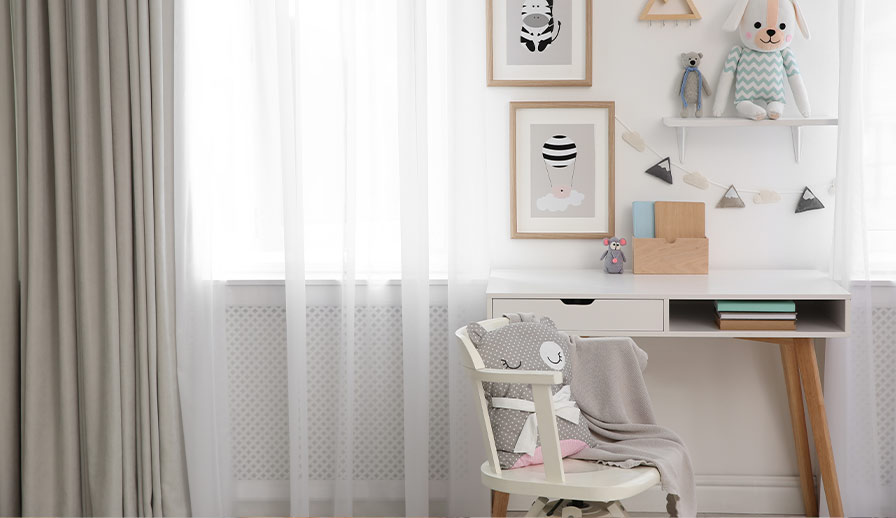Struggling to find content to share on your social media pages?
Stop scrolling through Instagram and Facebook. All you need is REALTOR.ca.
Our consumer lifestyle blog, Living Room, offers content including home improvement, market trends, DIY projects, neighbourhood guides and profiles on unique homes. Living Room publishes exciting new content four times a week (with unique French content for our Francophone fans).
While CREA Café is curated specifically to help your business grow and thrive, Living Room content is perfect to share with your clients.
Owned and operated by the Canadian Real Estate Association (CREA), REALTOR.ca is the No. 1 real estate platform in Canada (Comscore, 2020) with MLS® System listings from across the country.
Share this blog with your clients and followers with the Facebook button below!
You can also follow REALTOR.ca on Twitter, Instagram and Pinterest.
You can read the original blog here.

Whether your children are in elementary school, secondary school, or university, one thing is for sure, there will be homework. Your child’s learning environment can have a significant impact on the quality of their study time and academic success. A space that’s dull, filled with clutter, uncomfortable, and too noisy just won’t do. Here’s how you can set your child up for success by creating a functional space, study nook, or homework zone that can help increase productivity, information retention, and has minimal distractions.
Find the right location
Location, location! Do not underestimate the importance of the location of your child’s study space. Look for a space in your home that’s quiet, private, and free of potential distractions. A spare or unused room would be an excellent place to start, but if you’re like most homeowners, space often comes at a premium. Think creatively as you walk through your home. Do you have a closet that could be converted into a homework station? Is there room for an extra desk in your personal home office? Can you find a quiet corner in your living room, library, dining room, or basement? It’s all about getting creative with the space you have and making it work for your child.
Regardless of the location, consistency is key in making the study nook effective. Don’t let your child move about the house, doing homework at the kitchen table one night and reading on the couch the next. Creating a routine and habit of sitting at the homework station will help build an association with that space, so when your child sits down, they know it’s time for business!
The key elements of an effective study space
Any space can be instantly transformed into a comfortable place to study with just a few essentials: a desk, chair, lighting, and storage.
- Desk: A desk is the foundation of any workspace. Ensuring it’s the right size for your child will encourage them to stay put and be comfortable. You want the top of the desk to sit somewhere between your child’s waist and lower ribcage when they are seated, allowing elbows to comfortably sit on top, minimizing hunching and slouching. Attention should also be paid to the size of the top. It needs to be big enough to accommodate textbooks, notebooks, tablet/laptop, and accessories, while not being so large it will just gather clutter.
- Chair: If you’ve ever sat in an uncomfortable chair you know how hard it is to focus on anything else. A good, high-quality chair will not only help your child concentrate on the task at hand, but also alleviate and reduce problems that can affect other parts of the body, like the neck, back, wrists, and hands. Use an adjustable chair or one that’s made specifically to be paired with your chosen desk.
- Lighting: While natural light is ideal, it’s not always feasible if the study space is located in a basement, closet, or corner. Ensure the workspace has at least two sources of light, including ambient lighting (ceiling lights) and task lighting (a desk lamp). The level of lighting is also a factor to consider; too bright and it can cause headaches, too low and it can cause eye strain.
- Storage: Mess and clutter can be a real distraction for your child, pulling their focus from their work and slowing their productivity. Reduce the disruption by storing all study essentials out of sight or away from their desk. Bookshelves are key for storing books and binders, while desk drawers or cabinets can hold paper, pens, scissors, and such. Just keep in mind, all tools should be within reach, so they’re not constantly asking you for help retrieving items.
Study supplies
Look at your child’s syllabus or supply list from school and stock their space with the necessary and age-appropriate supplies they need to complete their studies. Ensure they have a variety of paper including plain, lined, and construction, writing utensils such as pens, pencils, erasers, markers, and crayons, as well as other miscellaneous items like rulers, staplers, sharpeners, a calculator, scissors, and sticky-notes. A large whiteboard calendar is a great investment as it allows your child to track homework assignments, tests, reminders, or class events. It also helps you see at a glance what the month ahead holds. Lastly, if your child has trouble concentrating, concentration tools can also be helpful. Consider including a fidget spinner, squishy/stress ball, or silly putty for them to hold while they work.

Design to inspire
Just because this space is dedicated to learning doesn’t mean it needs to be sterile and boring– after all, it’s a place you want your child to feel inspired and productive. Consider letting your child pick out a few personal items to decorate the space–posters, family photos, and wall decals are a good place to start. Take a trip to the dollar or craft store and let them select colourful dividers, patterned file folders, and fun containers for their pencils, crayons, and other miscellaneous items. Some small faux plants can also add warmth and liveliness to the space. A few personal touches and your child will feel at ease and ready to study in their space.
Tips for children who are doing virtual learning
Given the current situation around COVID-19, some parents are opting for virtual learning, meaning their child’s study nook or space will be occupied all day, every day. Here are a few additional tips for children who are going the virtual route.
- Do your best to eliminate distractions: If the study area is in a shared space (like a dining room or living room) consider investing in a simple room divider that can help compartmentalize the space; a good investment if you’re planning to stick to virtual learning for the foreseeable future.
- Be aware of your background: In most virtual learning scenarios, the use of a webcam will be required. Be aware of what is visible behind your child when attending class. You don’t want it to be too distracting, inappropriate, or embarrassing.
- Establish a routine and stick to it: Once your child has their syllabus, help them make a study schedule and fill in any key dates on their calendar or whiteboard. Teach them to reference the calendar and schedule at the start of the day so they’re prepared. Getting into a routine will increase the chances of success.
- Don’t forget about nutrition and movement breaks: Encourage your child to get up and fully leave their space for breaks. This will continue to reinforce the fact the space is for schoolwork only.
Setting up a dedicated space for your child to study and learn will ensure their success for the school year ahead, and it’s not as hard or complicated as you might think.




